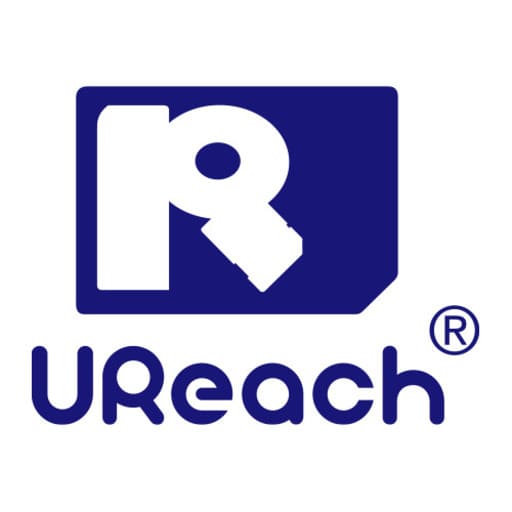
🏦 Data Security in Banking: How UReach Supports GLBA and ISO 27001 Compliance bank data erasure
In today’s financial world, data is currency — and protecting it is more than good practice; it’s the law. Banks and financial institutions process millions of sensitive records daily, from customer information to transaction histories and loan data. When these records reach the end of their lifecycle, they must be handled with the same level of care as when they were created.
That’s where data sanitization, data erasure, and data destruction come in — forming the foundation of secure information disposal in the banking sector.
For financial organizations governed by strict standards like the GLBA (Gramm–Leach–Bliley Act), ISO/IEC 27001, and Malaysia’s PDPA, using certified sanitization systems such as UReach MEG-4 and UReach MGU-12 ensures compliance, efficiency, and total peace of mind.
🔐 Why Data Sanitization Matters for Banks
Banks handle highly confidential customer data every day.
Even after a hard drive or SSD is “deleted” or reformatted, sensitive data can still be recovered using basic forensic tools. For a financial institution, such data leaks could result in:
- Heavy penalties under GLBA, ISO 27001, or PDPA regulations.
- Irreversible damage to reputation and customer trust.
- Possible legal liabilities from exposed client data.
To prevent these risks, banks must ensure that every storage device — from server drives to teller PCs — is completely sanitized before reuse, resale, or disposal.
⚖️ Understanding GLBA and ISO 27001 in Banking
GLBA – Gramm–Leach–Bliley Act
The GLBA applies primarily to financial institutions in the United States, requiring them to protect the privacy and security of customer financial information.
It enforces three key rules:
- Safeguards Rule: Create a written information security plan.
- Privacy Rule: Explain how customer data is shared and offer an opt-out option.
- Disposal Requirement: Securely dispose of customer information once it’s no longer needed.
Under GLBA, simply deleting data or formatting drives is not considered compliant — the data must be irreversibly erased or destroyed.
ISO/IEC 27001 – International Security Standard
ISO/IEC 27001 is the global benchmark for Information Security Management Systems (ISMS).
For banks operating internationally or across multiple regions, it ensures consistent protection of customer and corporate data.
ISO 27001’s Annex A.8.3 specifically addresses media handling and disposal, requiring organizations to:
- Sanitize or destroy media when no longer needed.
- Prevent unauthorized access or recovery.
- Keep documented evidence of disposal actions.
Together, GLBA and ISO 27001 form a strong compliance foundation — but meeting these standards requires reliable, auditable tools for secure data sanitization.
💡 Data Erasure, Destruction & Sanitization – Key Differences
| Method | Description | Device Reusability | Compliance Level |
| Data Erasure | Overwrites all data using certified software | ✅ Reusable | High |
| Data Destruction | Physically damages or shreds media | ❌ Not reusable | High |
| Data Sanitization | Comprehensive approach that includes both erasure and destruction | ✅/❌ Depending on method | Very High |
In banking, most institutions prefer data erasure for reusable devices — as it’s both eco-friendly and compliant — while data destruction is reserved for physically damaged or end-of-life drives.
GLBA – Gramm–Leach–Bliley Act
The GLBA applies primarily to financial institutions in the United States, requiring them to protect the privacy and security of customer financial information.
It enforces three key rules:
- Safeguards Rule: Create a written information security plan.
- Privacy Rule: Explain how customer data is shared and offer an opt-out option.
- Disposal Requirement: Securely dispose of customer information once it’s no longer needed.
Under GLBA, simply deleting data or formatting drives is not considered compliant — the data must be irreversibly erased or destroyed.
ISO/IEC 27001 – International Security Standard
ISO/IEC 27001 is the global benchmark for Information Security Management Systems (ISMS).
For banks operating internationally or across multiple regions, it ensures consistent protection of customer and corporate data.
ISO 27001’s Annex A.8.3 specifically addresses media handling and disposal, requiring organizations to:
- Sanitize or destroy media when no longer needed.
- Prevent unauthorized access or recovery.
- Keep documented evidence of disposal actions.
Together, GLBA and ISO 27001 form a strong compliance foundation — but meeting these standards requires reliable, auditable tools for secure data sanitization.
🔍 Comparison: Data Erasure vs. Data Destruction vs. Data Sanitization
1. Data Erasure
Description: Overwrites all data using certified software.
Device Reusability: ✅ Reusable
Compliance Level: High
2. Data Destruction
Description: Physically damages or shreds the media to make recovery impossible.
Device Reusability: ❌ Not reusable
Compliance Level: High
3. Data Sanitization
Description: A comprehensive approach that includes both erasure and destruction depending on data sensitivity.
Device Reusability: ✅/❌ Depending on method
Compliance Level: Very High
In banking, most institutions prefer data erasure for reusable devices — as it’s both eco-friendly and compliant — while data destruction is reserved for physically damaged or end-of-life drives.
🧠 Why Banks Choose UReach for Data Sanitization
UReach offers industry-leading data duplication and erasure solutions that combine speed, reliability, and compliance.
Both the MEG-4 and MGU-12 are certified systems that follow NIST 800-88, DoD 5220.22-M, and global compliance standards.
UReach MEG-4 – Department-Level Secure Erasure
A 4-port professional-grade duplicator ideal for bank branches or IT service centers.
Key Features:
- Multiple erase modes (Quick Erase, Full Erase, Secure Erase).
- Verifiable audit logs for each operation — ideal for GLBA reporting.
- Compact, user-friendly design for small teams.
- Compliant with NIST 800-88 and ISO 27001 Annex A.8.3.
👉 Learn more: UReach MEG-4
UReach MGU-12 – Enterprise-Level Data Sanitization
Built for data centers and IT departments, the MGU-12 supports up to 12 drives simultaneously — perfect for high-volume erasure needs.
Key Features:
- Parallel erasure of SSDs, HDDs, and flash drives.
- Generates detailed erasure certificates with serial number tracking.
- Ensures consistent, auditable compliance with GLBA and ISO 27001.
- Ideal for banks managing multiple regional branches or data centers.
👉 Learn more: UReach MGU-12
📘 Case Study: A Leading Bank in Sarawak Strengthens Data Compliance
Recently, a major financial institution in Sarawak adopted UReach’s MEG-4 and MGU-12 systems as part of its IT security upgrade.
The Challenge
The bank previously relied on basic formatting and third-party services for drive disposal.
This created several issues:
- Inconsistent verification of erased drives.
- Lack of centralized audit logs for compliance reporting.
- High manual workload for IT teams.
The Solution
The bank integrated UReach MEG-4 units at branch level and an MGU-12 system at its main data center.
Results achieved:
- 100% verifiable data erasure with audit certificates.
- Reduced processing time by 60% through parallel multi-drive erasure.
- Centralized compliance reporting for internal and external audits.
- Environmental benefits by securely reusing sanitized drives.
“With UReach, we now have full visibility of our data disposal process. Every drive erased is logged, certified, and compliant.”
— IT Security Officer, Sarawak Bank (statement summarized for privacy)
This implementation helped the bank meet the strict requirements of GLBA, ISO 27001, and PDPA, while improving operational efficiency.

🏢 The Role of Compliance in Financial Data Disposal
GLBA Safeguards Rule
Requires banks to take administrative, technical, and physical measures to secure customer data — including proper disposal of old media.
UReach MEG-4 and MGU-12 help meet this rule by generating verifiable erasure reports for each device.
ISO 27001 Annex A.8.3
Mandates the secure handling and disposal of media.
With UReach’s automatic logging, banks can maintain a traceable record of every erased drive — ensuring accountability.
Malaysia’s PDPA
Local banks must also comply with the Personal Data Protection Act (PDPA), which requires personal information to be securely deleted when no longer needed.
UReach’s erasure tools allow organizations to align local and global compliance standards seamlessly.
📊 Example: Bank Data Lifecycle with UReach Solutions
Lifecycle Stage | Compliance Focus | UReach Solution |
Active Data | Data access control and encryption | Internal ISMS |
Stored Data | Restricted access, backup, and monitoring | Secure media storage |
End-of-Life Data | Secure erasure or destruction |
By integrating certified UReach systems, banks can create a standardized data sanitization workflow that meets both regulatory and operational needs.
GLBA Safeguards Rule
Requires banks to take administrative, technical, and physical measures to secure customer data — including proper disposal of old media.
UReach MEG-4 and MGU-12 help meet this rule by generating verifiable erasure reports for each device.
ISO 27001 Annex A.8.3
Mandates the secure handling and disposal of media.
With UReach’s automatic logging, banks can maintain a traceable record of every erased drive — ensuring accountability.
Malaysia’s PDPA
Local banks must also comply with the Personal Data Protection Act (PDPA), which requires personal information to be securely deleted when no longer needed.
UReach’s erasure tools allow organizations to align local and global compliance standards seamlessly.
📊 Example: Bank Data Lifecycle with UReach Solutions
1. Active Data
Compliance Focus: Data access control and encryption
UReach Solution: Internal ISMS
2. Stored Data
Compliance Focus: Restricted access, backup, and monitoring
UReach Solution: Secure media storage
3. End-of-Life Data
By integrating certified UReach systems, banks can establish a standardized data sanitization workflow that satisfies GLBA, ISO 27001, and PDPA requirements — ensuring secure, compliant, and traceable data management across every stage of the information lifecycle.

🌍 Environmental Responsibility in Banking IT
Modern financial institutions are increasingly committed to sustainability and green IT.
Physical destruction creates e-waste, while data erasure allows safe reuse of drives.
With UReach’s data erasure solutions, banks can:
- Extend the lifespan of existing hardware.
- Reduce electronic waste from discarded drives.
- Maintain compliance while supporting environmental goals.
This approach supports both corporate sustainability and regulatory compliance — a win-win for financial organizations.
🧩 Implementing a Secure Data Disposal Policy
To ensure full compliance and data safety, banks should implement a structured data disposal policy.
Here’s a recommended framework:
- Identify all data storage devices (servers, laptops, external drives).
- Classify data sensitivity levels.
- Choose the appropriate sanitization method:
- Data Erasure → For reusable drives.
- Data Destruction → For damaged or obsolete devices.
- Use certified tools like UReach MEG-4 and UReach MGU-12.
- Generate audit reports for every sanitization process.
- Retain erasure certificates as part of your compliance documentation.
This ensures that every data-handling action — from storage to disposal — is traceable, verifiable, and compliant.
🛡️ Why UReach Is Trusted by Financial Institutions
UReach systems are used globally by banks, government agencies, and data centers for one simple reason — reliability.
Each system is designed to deliver:
- High-speed parallel performance.
- Full audit and report generation.
- Compatibility with major drive formats (HDD, SSD, USB).
- Compliance with global standards (NIST 800-88, DoD 5220.22-M, GLBA, ISO 27001, PDPA).
When compliance and security are non-negotiable, UReach offers the certified assurance financial institutions demand.
🚀 Conclusion: Why UReach Leads in Secure Data Sanitization
In today’s financial industry, data protection is more than compliance — it’s trust. Every piece of storage media that leaves a bank’s IT environment carries potential risk. Without proper sanitization, even one overlooked drive can lead to major data breaches or regulatory penalties.
This is why more financial institutions — including a leading bank in Sarawak — rely on UReach. With its proven technology and global certifications, UReach offers banks confidence, compliance, and control in every stage of data disposal.
Certified Solutions for Every Banking Need
- UReach MEG-4: Designed for branch-level operations, the MEG-4 delivers certified erasure in a compact, user-friendly form. It’s ideal for small IT teams needing reliable performance with full audit reports that comply with GLBA and ISO 27001.
👉 View product page - UReach MGU-12: Built for enterprise and data center environments, the MGU-16 can erase up to 16 drives in parallel. It’s the choice for banks managing large-scale sanitization and compliance reporting.
👉 View product page
Both models follow NIST Special Publication 800-88 and support erasure verification logs that ensure complete traceability — a key component in standards like ISO/IEC 27001.
UReach: Supporting Global Banking Compliance
UReach products are trusted worldwide by banks, government agencies, and IT data centers to ensure:
- Full compliance with GLBA, ISO 27001, and PDPA.
- Verifiable erasure certificates for every device sanitized.
- Green IT alignment, reducing e-waste by reusing sanitized drives.
- Global technical support and firmware updates to match evolving compliance needs.
From financial institutions in Malaysia to international banking networks, UReach continues to be a trusted partner in secure data sanitization.
With the MEG-4 and MGU-12, banks can stay compliant, protect customer data, and demonstrate their commitment to data integrity and environmental responsibility.

Check out our MEG series of Hard Disk Eraser: MEG SSD/HDD series
UReach-Malaysia official website: https://ureach.com.my/
E-mail: info@ureach.com.my

